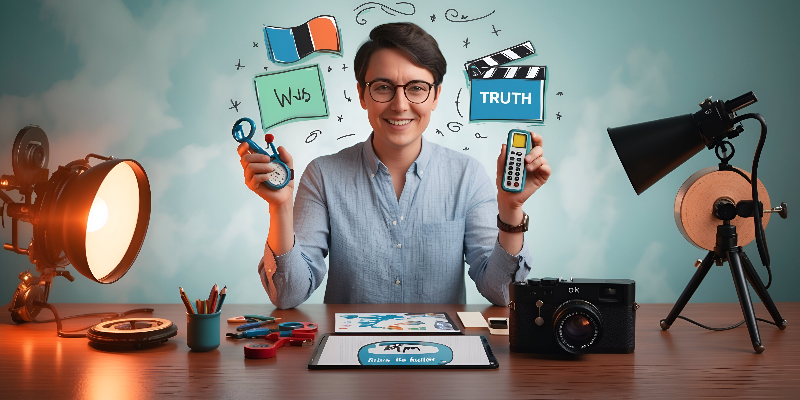

In today’s hyper-digital world, multimedia in marketing has become an indispensable tool for brands seeking attention, engagement, and conversion. The content that is all about text is no longer sufficient to capture the interest of the consumers. The use of videos, graphics, audio, animations, interactive presentations, and virtual experiences is redefining the way business addresses their audiences. This is where the role of multimedia in marketing becomes critical—not only to attract attention but to sustain it and convert it into lasting customer relationships.
At its core, multimedia in marketing involves the integration of multiple content forms, such as text, visuals, audio, video, and interactivity, to craft compelling brand messages. These aspects combine to help make users more immersed. This change in behavior exhibited by consumers and the technological development is evidenced in the move away from static content and into dynamic, multimedia-driven campaigns.
In fact, in the attention economy, companies are having to struggle over every inch of audience attention. Research indicates that individuals remember 95 percent of a message when they see it in a video as opposed to just 10 percent when it is read as text. The multimedia application in marketing allows brands to simplify complex ideas, increase emotional impact, and enhance message retention.
One of the strongest multimedia application in marketing is visual storytelling. Infographics, images, and animations are a visual sign that generates emotion and can describe complex ideas quite fast. Videos will also allow any brand to tell its story in a few seconds, which is ideal in social media settings when people rarely pay attention to lengthy campaigns.
The role of multimedia in marketing extends into creating two-way interactions. Active advertisements, clickable infographics, filters of augmented reality, and quizzes make the user more involved. This improves the engagement as well as giving important information about consumer behavior. Virtual fashion or virtual walkthroughs of houses through VR are only two examples of industry reshaping that happen through virtual try-ons.
Podcast sponsorships, branded playlists, and voice search optimization are examples of how multimedia in marketing has evolved to include audio formats. The flexibility and intimacy of the audio content make it possible to involve users with brands even when they multitask. Sonic branding—like Netflix’s opening sound or Intel’s jingle—is another compelling multimedia application in marketing that builds brand recall.
There is actually a lack of reason why video content dictates every social platform. Video provides high ROI in terms of YouTube advertisements, as well as explainer videos on landing pages. The role of multimedia in marketing here is unmatched—it allows brands to demonstrate products, show customer testimonials, and humanize their identity. Webinars and live streaming also assist enterprises in getting in contact with their customers in real-time.

A strategic use of multimedia in marketing helps businesses achieve multiple objectives:
The role of multimedia in marketing is not just about aesthetics—it’s about function. Every informational asset ought to have a reason within the customer journey, and this could be as simple as creating trust or imparting knowledge or prompting action.

These examples show that multimedia application in marketing can be tailored to brands of any size and across any industry.
Let’s break down the advantages of multimedia in marketing:
To maximize the impact of multimedia application in marketing, follow these steps:

Looking ahead, expect multimedia in marketing to become even more immersive and AI-powered. The most important trends are:

The role of multimedia in marketing is no longer optional—it’s essential. In an era where so much noise competes with a brand in the digital space and consumer expectations are growing, any brand that does not creatively and strategically use multimedia will not be heard. Whether it is video and visuals, interactive or voice content, everything is possible. For businesses looking to scale their digital footprint, partnering with a professional Marketing agency in Bangalore can offer the creative and technical expertise needed to harness the full power of multimedia.
Whether you're a startup or an established enterprise, now is the time to embrace multimedia application in marketing—to tell better stories, engage more deeply, and drive meaningful results.